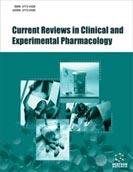Abstract
Background: The prevalence of cholelithiasis in developed countries is high and its cause is multifactorial, with a negligible proportion of drug-induced cholelithiasis.
Methods: Relevant studies were identified by PubMed, Google Scholar and Science Direct. Reference lists of retrieved articles were also reviewed. The most relevant and up-to-date information was incorporated.
Results: There is a wide range of drugs that can induce lithiasis. While the risk of developing lithiasis is high with some drugs (ceftriaxone, atazanavir, somatostatin analogues), it is lower or even questionable with others. Some drugs precipitate in the bile and may account for up to 100% of the weight of the stone.
Conclusion: Cholelithiasis can be induced by a wide range of drugs with different mechanisms of action. The aim of the article is to draw attention to this lesser known fact and the need to take into account the risk of developing lithiasis prior to therapy initiation.
Keywords: Cholelithiasis, drugs, ceftriaxone, atazanavir, somatostatin analogues, lithiasis.
Graphical Abstract
Current Reviews in Clinical and Experimental Pharmacology
Title:Drug-induced Cholelithiasis
Volume: 16 Issue: 4
Author(s): Štefan Alušík and Zoltán Paluch*
Affiliation:
- Department of Pharmacology, Second Faculty of Medicine, Charles University, Prague,Czech Republic
Keywords: Cholelithiasis, drugs, ceftriaxone, atazanavir, somatostatin analogues, lithiasis.
Abstract:
Background: The prevalence of cholelithiasis in developed countries is high and its cause is multifactorial, with a negligible proportion of drug-induced cholelithiasis.
Methods: Relevant studies were identified by PubMed, Google Scholar and Science Direct. Reference lists of retrieved articles were also reviewed. The most relevant and up-to-date information was incorporated.
Results: There is a wide range of drugs that can induce lithiasis. While the risk of developing lithiasis is high with some drugs (ceftriaxone, atazanavir, somatostatin analogues), it is lower or even questionable with others. Some drugs precipitate in the bile and may account for up to 100% of the weight of the stone.
Conclusion: Cholelithiasis can be induced by a wide range of drugs with different mechanisms of action. The aim of the article is to draw attention to this lesser known fact and the need to take into account the risk of developing lithiasis prior to therapy initiation.
Export Options
About this article
Cite this article as:
Alušík Štefan and Paluch Zoltán *, Drug-induced Cholelithiasis, Current Reviews in Clinical and Experimental Pharmacology 2021; 16 (4) . https://dx.doi.org/10.2174/1574884715666201217125009
| DOI https://dx.doi.org/10.2174/1574884715666201217125009 |
Print ISSN 2772-4328 |
| Publisher Name Bentham Science Publisher |
Online ISSN 2772-4336 |
 15
15
- Author Guidelines
- Graphical Abstracts
- Fabricating and Stating False Information
- Research Misconduct
- Post Publication Discussions and Corrections
- Publishing Ethics and Rectitude
- Increase Visibility of Your Article
- Archiving Policies
- Peer Review Workflow
- Order Your Article Before Print
- Promote Your Article
- Manuscript Transfer Facility
- Editorial Policies
- Allegations from Whistleblowers
Related Articles
-
Growth Restriction: Etiology, Maternal and Neonatal Outcome. A Review
Current Women`s Health Reviews Cocaine Dependence and Stroke: Pathogenesis and Management
Current Neurovascular Research Acute Phase Proteins In Acute Coronary Syndrome: An up-to-date
Cardiovascular & Hematological Agents in Medicinal Chemistry Statins and Protein Prenylation in Cancer Cell Biology and Therapy
Anti-Cancer Agents in Medicinal Chemistry Advances in peptidic and peptidomimetic-based approaches to inhibit STAT signaling in human diseases
Current Protein & Peptide Science Patent Selections
Recent Patents on Endocrine, Metabolic & Immune Drug Discovery (Discontinued) The Circulating Endothelial Cell in Cancer: Towards Marker and Target Identification
Current Pharmaceutical Design First-Line Treatment of Multiple Myeloma in Elderly Patients: the GIMEMA (Gruppo Italiano Malattie EMatologiche dellAdulto) Multiple Myeloma Working Party Perspective
Current Drug Targets Cholinergic Drugs as Therapeutic Tools in Inflammatory Diseases: Participation of Neuronal and Non-Neuronal Cholinergic Systems.
Anti-Inflammatory & Anti-Allergy Agents in Medicinal Chemistry Importance of Influx and Efflux Systems and Xenobiotic Metabolizing Enzymes in Intratumoral Disposition of Anticancer Agents
Current Cancer Drug Targets The Role of the Gut Microbiota in Energy Metabolism and Metabolic Disease
Current Pharmaceutical Design Current Development in Tissue-Engineered Vascular Grafts
Vascular Disease Prevention (Discontinued) Cardiovascular Complications in Inflammatory Bowel Disease
Current Drug Targets Peroxisome Proliferator Activated Receptor Gamma Coactivator 1 Alpha: An Emerging Target for Neuroprotection in Parkinson’s Disease
CNS & Neurological Disorders - Drug Targets Cysteinet Dysregulation in Muscular Dystrophies: A Pathogenic Network Susceptible to Therapy
Current Medicinal Chemistry Heat Shock Protein-60 and Risk for Cardiovascular Disease
Current Pharmaceutical Design Selenium Compounds Biotransformed by Mushrooms: Not Only Dietary Sources, But Also Toxicity Mediators
Current Nutrition & Food Science The Effects of Sevoflurane or Remifentanil on the Stress Response to Surgical Stimulus
Current Pharmaceutical Design Melanocortin Receptor Type 3 as a Potential Target for Anti-Inflammatory Therapy
Current Drug Targets - Inflammation & Allergy Unmet Needs in Schizophrenia
CNS & Neurological Disorders - Drug Targets



























